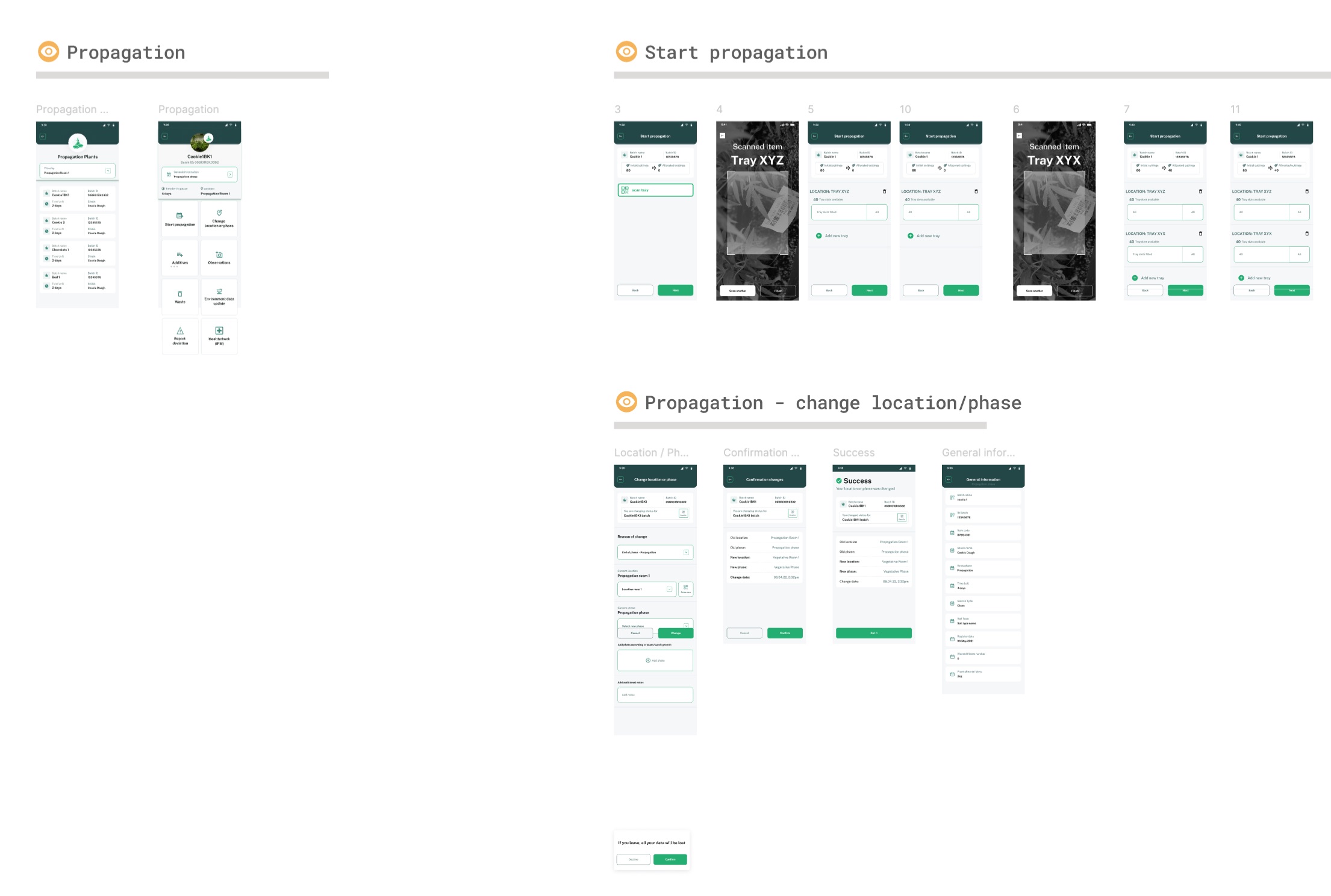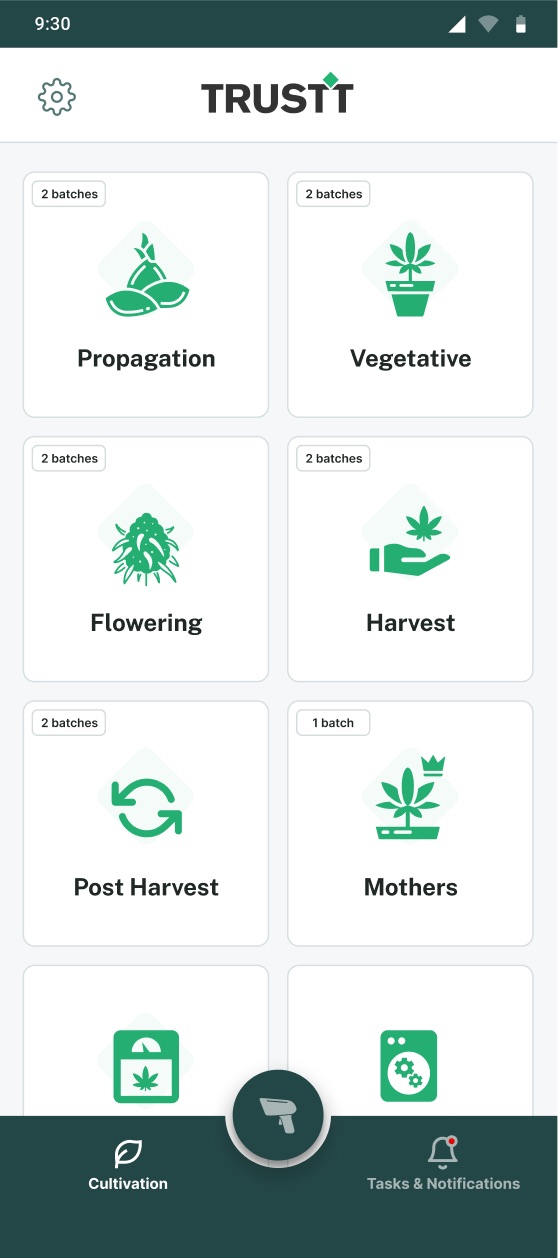In recent years, the European Union has seen a significant shift with the legalization of medical use of plant-based psychoactive substances. This change opened up a new market, ripe with opportunities but also fraught with complexities, particularly around the cultivation (GACP) and processing (GMP) of these regulated plants. As demand surged, it became clear that digital solutions were essential to manage and supervise these processes effectively. Seeing a blue ocean opportunity in this emerging market, I knew I had to create a solution from scratch that was not only comprehensive but also adaptable, meeting the diverse needs of various stakeholders while ensuring full legislative compliance across all EU countries.
My journey began with clear objectives:
- Develop a robust ERP system to streamline organizational processes.
- Integrate a companion app to extend the functionality of the ERP system and enhance the user experience.
- Identify quick wins and devise a solid implementation strategy.
- Highlight the necessity and benefits of an ERP system, including mobile access.
- Define the project scope, including both the core system and the companion app.
- Aim to improve efficiency, enhance user experience, and enable mobile access to ERP functionalities.
Starting from scratch in a startup environment presented several unique challenges:
- No Existing Data: Without existing data or systems, I had to build everything from the ground up.
- Fragmented Processes: Establishing cohesive processes where none previously existed was critical.
- Regulatory Complexity: Navigating the complex regulatory landscape across different EU countries was daunting.
- Mobile Access: There was a growing need for real-time data access and mobile solutions to enhance decision-making and responsiveness.
To tackle these challenges, I embarked on a comprehensive research phase:
- Requirements Gathering: I conducted detailed interviews with key stakeholders to understand their needs and preferences, especially concerning mobile access.
- Legislation and compliance: The main boiling point was to craft the design ahead of compliance. Regulations had to be met and covered.
- Personas: Variety of personas were introduced as users of app. Categorizing them in particular groups helped to narrow initial project flows.
- Process Analysis: I meticulously designed the workflows and processes needed for the new system, ensuring they met the unique requirements of the startup.
- Competition research: USA & Canada already had their takes on providing software solution for that topic. I conducted thorough research on existing ERP systems and companion apps in the market. This included analyzing their features, strengths, weaknesses, and how well they complied with EU regulations. This research helped identify gaps in the current offerings and opportunities to innovate and differentiate my solution from competitors.








System design
- High-Level Architecture: I crafted a high-level architecture for the ERP system, ensuring it included APIs and integration points for the companion app.
- Modules and Components: I defined essential modules and components for both the ERP system and the companion app, maintaining consistency and compatibility.
- User Interface Design: I prioritized user-friendly interfaces, designing the ERP system and companion app to be intuitive and seamless.
Data modeling
- Database Schema: I designed a robust database schema, tailored to the needs of both platforms, ensuring efficient data storage and retrieval.
- Data Structure: I defined a secure and compliant data structure to be shared between the ERP system and the companion app.
Integration
- Integration Plan: I developed a comprehensive plan for integrating the ERP system with the companion app, focusing on APIs and data exchange mechanisms.
- Third-Party Integration: I identified necessary third-party systems and services, ensuring smooth integration.
- Data Migration: I devised strategies to migrate existing data into the new ERP system, making it accessible via the companion app.
Development and Implementation
- Development: I meticulously developed the ERP system and companion app, adhering to the design specifications and stakeholder requirements.
- Testing: Rigorous testing was conducted to ensure both platforms met all functional and performance criteria.
- Training: I provided extensive training for end-users and administrators, ensuring they could use both the ERP system and companion app effectively.
Monitoring and Maintenance
- Monitoring Procedures: I established procedures to monitor performance and usage, ensuring regular updates and maintenance.
- Ongoing Support: Continuous support was provided to address any issues or concerns that arose.
- Continuous Evaluation: I regularly evaluated the effectiveness of the companion app, ensuring it met user needs and project objectives.
The project resulted in a powerful ERP system complemented by a companion app that:
- Established Efficient Processes: Organizational processes became more efficient and cohesive from the ground up.
- Enhanced User Experience: Mobile access and user-friendly interfaces significantly improved the user experience.
- Compliance Assurance: Full legislative compliance was achieved across all EU countries.
- Real-Time Access: Users benefited from real-time data access, enhancing decision-making capabilities.
- Improved Collaboration: Integration across departments fostered better collaboration and operational efficiency.




















Reflecting on my journey, the ERP design project was a success. The integration of the companion app not only extended the functionality of the ERP system but also significantly enhanced the user experience. Key takeaways include:
- Building from Scratch: Creating comprehensive solutions from scratch requires meticulous planning and execution.
- Design system adoption: Fast paced environment required adoption and redefinition of existing design system, rather than building one from scratch.
- User-Centric Design: Prioritizing user-friendly interfaces boosts adoption and productivity.
- Continuous Improvement: Ongoing user feedback and robust testing are vital for maintaining relevance and effectiveness.
In conclusion, this case study underscores the importance of a well-designed ERP system and companion app in driving organizational efficiency and user satisfaction. By focusing on detailed research, user-centric design, and continuous improvement, I created a solution that meets the needs of a dynamic and regulated market.